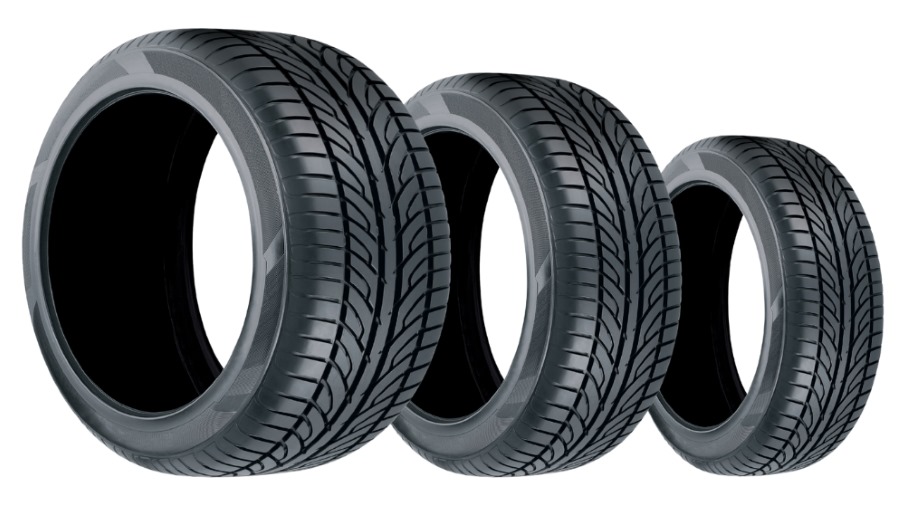What is a Tubeless Tyre, it’s Advantages & How it Works?

Innovations and improvements in the automobile industry are not new. In the past few decades, you must have witnessed many advancements in this sector. From new-age technology in cars to tailor-made tyres, many exciting things are happening in this industry.
However, one of the most customer-driven innovations was the introduction of tubeless tyres. But what are tubeless tyres? Well, these tyres require no emphasis on their meaning as it is evident from their name that they are tyres without a tube. Unlike the traditional tubed tyres, you will not find a separate inner tube in these tyres.
Continue reading to get to know what is a tubeless tyre.

Table of Contents

Composition of a Tubeless Tyre
The main characteristic of these tyres is that they contain an air balloon by themselves. Its interior has a tight halo or chloro-butyl lining. Since this lining is airtight, it creates pressure and holds the air within the tyre.
The materials used in these tyres include rubber, threads needed for the casing, and steel wire for the bead. But you must wonder how does tubeless tyres work. The following section provides you with a detailed account of the same.
How Does a Tubeless Tyre Work?
After understanding what tubeless tyres are, look at the following points that highlight how a tubeless tyre works.
The chloro-butyl lining in the inner tyre is tightened to the rim of the wheel. There is no gap left for the air to escape.
In order to make this system airtight, a strong adhesive or sealant is used to block any leaking areas or holes. It also aids in reducing punctures during driving.
When a person drives their vehicle at a high speed, the temperature in the tyre usually increases. As a result, the pressure on the tyre tube also rises. During these times, a normal tubed tyre will become more prone to punctures and may burst due to excessive heat.
Since tubed tyres have an inner tube, the excessive heat caused by high-speed driving escapes quickly through the tyre, but the force of this air pressure is so high that it may blast the rubber in the tyre. It leads to lost control and unstable vehicles.
In tubeless tyres, the puncture hole is the only way for the heat or air to escape. As a result, the heat escapes the tyre slowly through the tiny hole that led to the puncture. In this way, the heat dissipation takes place in tubeless tyres.
Advantages of Tubeless Tyres
People are shifting towards tubeless tyres rather quickly. This is mainly due to the advantages these tyres offer. The following points highlight the most effective tubeless tyre advantages.
1. Less Puncture Risk:
You can experience risk-free driving or riding with these tyres. There is a reduced risk of punctures caused by a small needle or by tyre pinching. You can drive your vehicle on these tyres even at low pressures.
2. More Durable & Efficient:
These tyres do not flatten easily after running on low pressures for a long time. Hence, these are more durable than conventional tyres.
3. Aggressive Grip:
Most tubeless tyres offer excellent grip, unmatchable speed, and improved comfort level.
4. Trusted by Professionals:
Many racers use tubeless tyres as these roll faster and have a lower rolling resistance than tubed tyres.
5. Easy to Fix:
Are you stuck in the middle of the road when your tyre is punctured? With tubeless tyres, you can put a sealant through the hole (where the puncture occurred) and get back to your driving seat. You can fix the puncture temporarily in this effective way when you are on long road journeys.
6. Fuel-efficient:
Tubeless tyres are more fuel-efficient due to a lower rolling resistance. This means that they need less energy to propel a vehicle ahead, which helps save fuel money.
7. Longer Lifespan:
The advanced ability to avoid punctures and blowouts extends the lifespan of tubeless tyres, reducing the frequency of replacement.
Disadvantages of Tubeless Tyres
The points given below mention some limitations of tubeless tyres.
These tyres are not a cost-effective option as you will be required to buy a sealant more often. On the other hand, the maintenance cost of tubed tyres is comparatively less.
Some tubeless tyres take time and are complex to fit in the rim.
You must purchase a sealant regularly, which is time-consuming and costly.
These tyres demand more air pumping, requiring more effort from the user or driver.
Tubeless tyres are starting to become a need for modern vehicles. Its ability to carry vehicles at high speeds without any damage is phenomenal.
However, it depends on your needs whether your car or bike is suited for a tubed or tubeless tyre. Researching different options, comparing them on various parameters, and selecting the best tyre type accordingly is recommended.
















